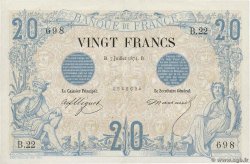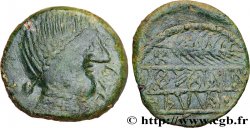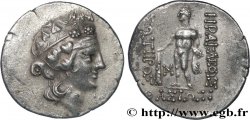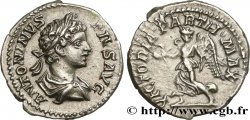Live auction - bgr_578695 - MYSIA – PARION / PARIUM Tétradrachme
You must signin and be an approved bidder to bid, LOGIN TO BID. Accounts are subject to approval and the approval process takes place within 48 hours. Do not wait until the day a sale closes to register. Clicking on "BID" constitutes acceptance of the terms of use of cgb.fr private live auctions.
Bids must be placed in whole Euro amounts only. The sale will start closing at the time stated on the item description; any bids received at the site after the closing time will not be executed. Transmission times may vary and bids could be rejected if you wait until the last second. For further information check the Live auction FAQ
All winning bids are subject to a 18% buyer’s fee.
All winning bids are subject to a 18% buyer’s fee.
| Estimate : | 1 500 € |
| Price : | 1 700 € |
| Maximum bid : | 1 700 € |
| End of the sale : | 08 September 2020 14:27:19 |
| bidders : | 6 bidders |
Type : Tétradrachme
Date: c. 280 AC.
Mint name / Town : Parium, Mysie
Metal : silver
Diameter : 30,5 mm
Orientation dies : 2 h.
Weight : 17,11 g.
Rarity : R2
Coments on the condition:
Monnaie sur un flan bien centré des deux côtés. Portrait expressif de toute beauté. Patine grise de médailler
Catalogue references :
Obverse
Obverse legend : ANÉPIGRAPHE.
Obverse description : Tête imberbe d'Alexandre le Grand sous les traits de Zeus-Ammon, cornu et diadémé à droite.
Reverse
Reverse description : Athéna nicéphore assise à gauche sur un trône, tenant une petite Niké de la main droite qui couronne le nom de Lysimaque et le coude gauche reposant sur un bouclier orné d'un masque de lion ; un monogramme dans le champ à gauche entre le nom du roi et Athéna.
Reverse legend : BASILEWS/ LUSIMACOU/ (PAR)/ (ER), (Bsilews Lusimacou)
Reverse translation : (du roi Lysimaque).
Commentary
Cette combinaison connue de Müller au XIXe siècle n’est pas reprise dans l’article de M. Thompson ce qui semblerait indiquer un monnayage posthume.
This combination, known to Müller in the 19th century, is not included in Mr. Thompson's article, which would seem to indicate a posthumous coinage.
This combination, known to Müller in the 19th century, is not included in Mr. Thompson's article, which would seem to indicate a posthumous coinage.







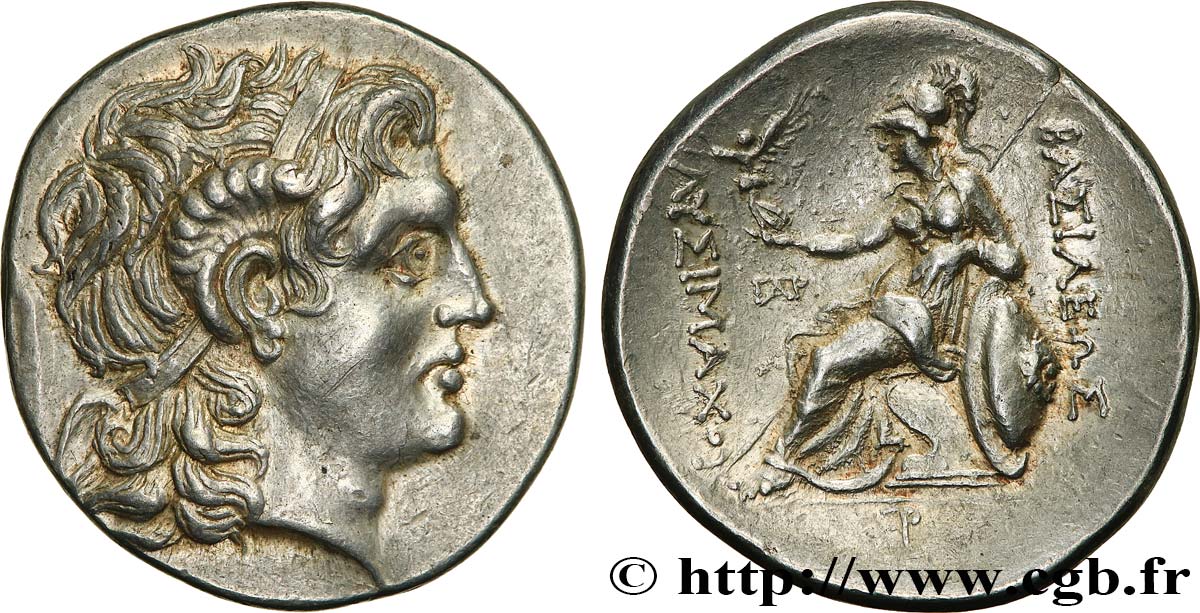
 Report a mistake
Report a mistake Print the page
Print the page Share my selection
Share my selection Ask a question
Ask a question Consign / sell
Consign / sell